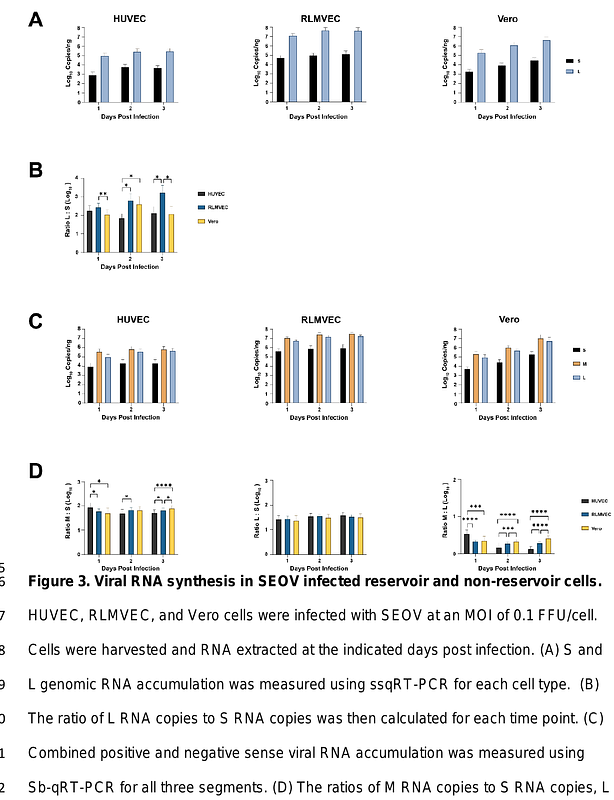Impact of Species and Cell-type on the RNA Replication Kinetics of Seoul Virus

Impact of Species and Cell-type on the RNA Replication Kinetics of Seoul Virus
LaPointe, A. T.; Klimaj, S. D.; Kell, A. M.
AbstractHantaviruses are zoonotic, tri-segmented, negative-sense RNA viruses and a significant public health threat. Viral pathogenesis varies between host species, with rodent reservoir infection being asymptomatic and human infection resulting in severe, immune-mediated disease. Viral pathogenesis is highly dependent on virus replication efficiency since it affects the virus\'s ability to evade detection and determines the magnitude of the host immune response. While hantaviruses infect many species with variable pathogenic outcomes, their molecular replication kinetics remain poorly defined. Therefore, we developed a sense- and segment-specific quantitative real-time PCR (ssqRT-PCR) assay and a SYBR-based qRT-PCR (Sb-qRT-PCR) assay, allowing us to quantify both negative-sense genome levels and total viral RNA synthesis of the small (S), medium (M), and large (L) segments of Seoul virus (SEOV). We then measured total viral RNA and genome accumulation in reservoir rat endothelial cells (RLMVEC), non-reservoir human endothelial cells (HUVEC-C), and Vero E6 epithelial cells. We also measured the ratio of each segment released into the culture supernatant, approximating the relative packaging efficiency. We found that viral RNA replication kinetics were largely similar between reservoir and non-reservoir endothelial cells, but that replication and release kinetics differed between infection of endothelial and epithelial cells. We also found that the S, M, and L segments were not equally abundant during viral infection or release, but instead followed a trend of M>L>S. Overall, this study validates two qRT-PCR assays to measure SEOV RNA, details the accumulation and release of each viral segment, and demonstrates the impact of cell type on hantavirus replication.